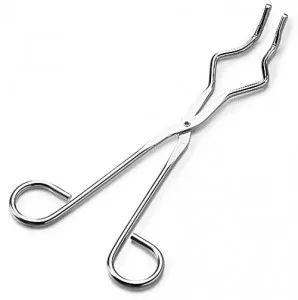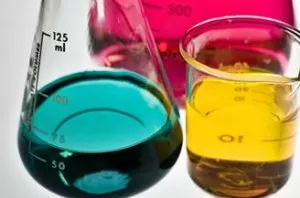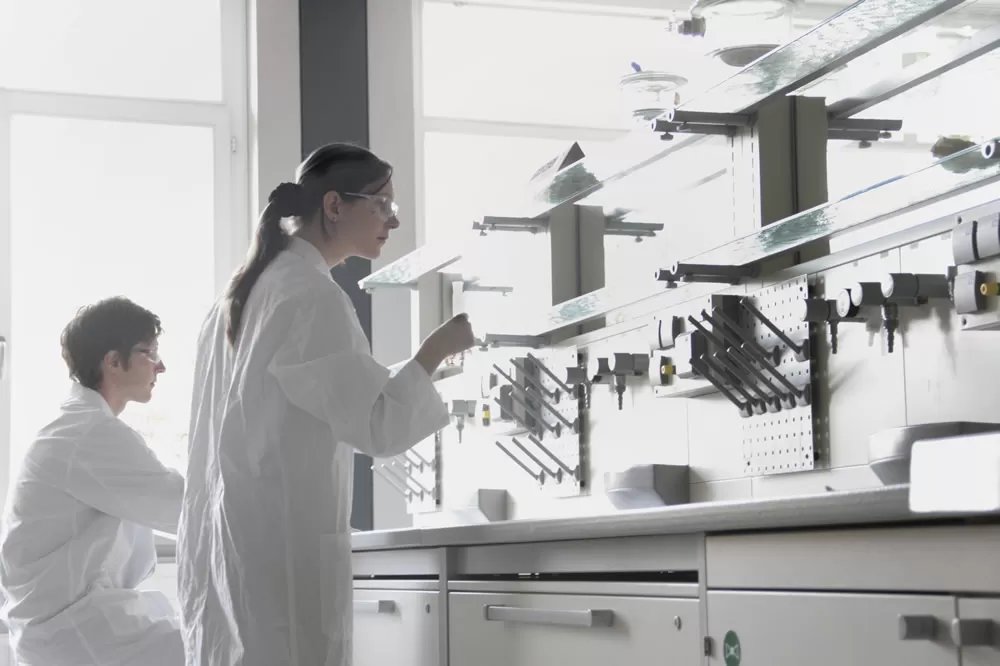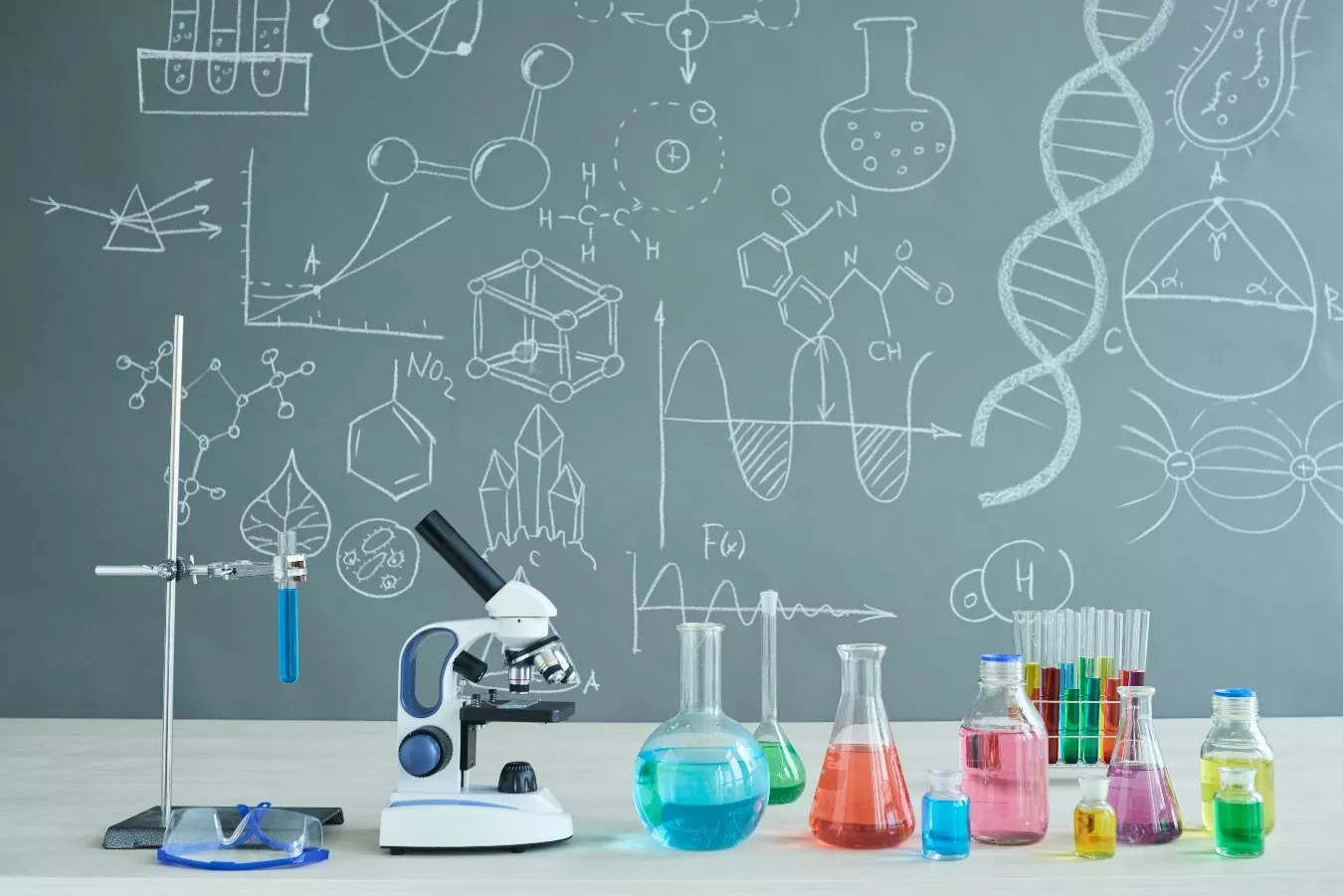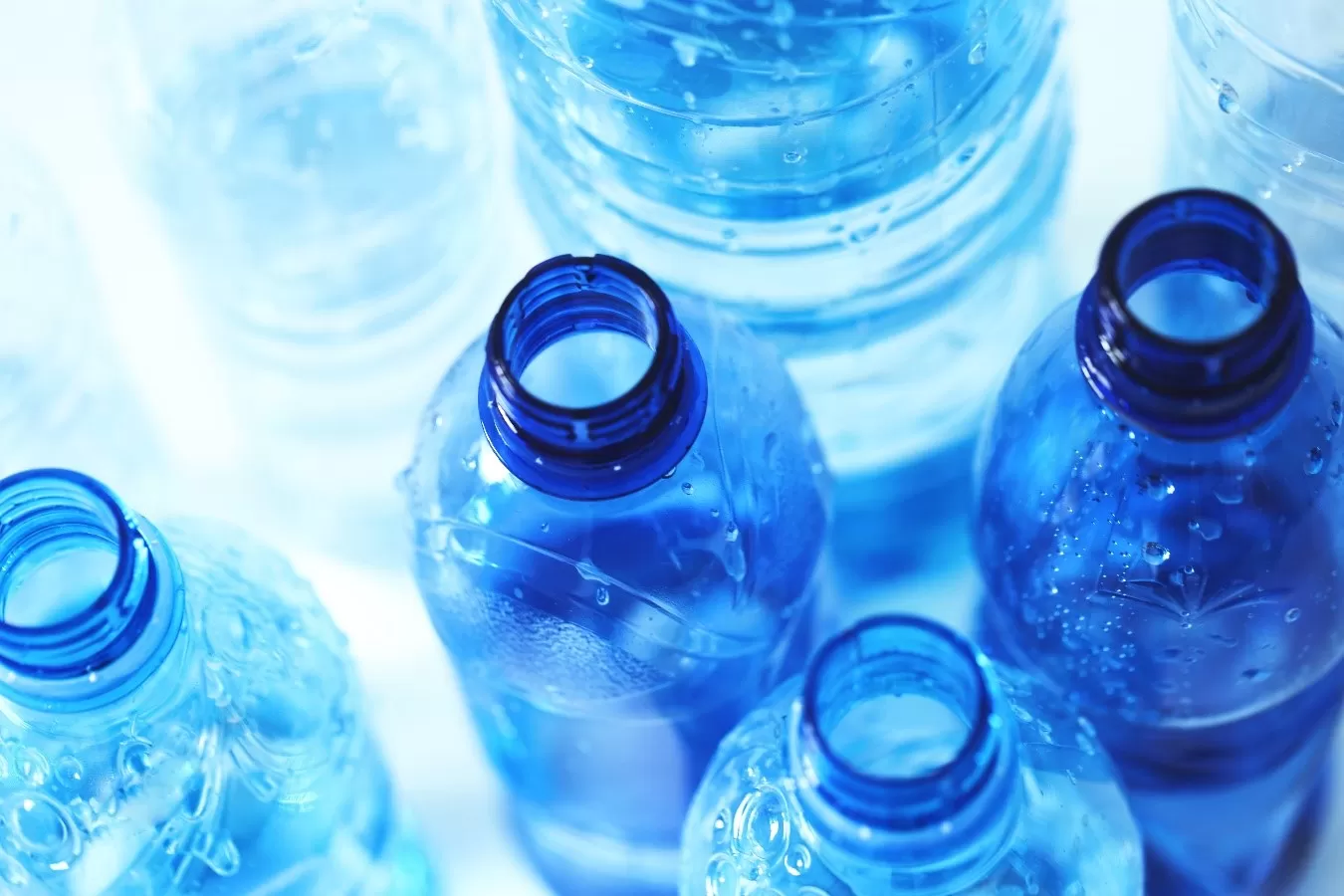Active complex
Chemical Glossary Terms

|
A B C D E F G H I J K L M N Ñ O P Q R S T U V W X Y Z
|
Chemical Terms begining with C

Chain
Series of carbon atoms attached consecutively that make up the skeleton of an organic molecule
Cadmium
Chemical element of Cd symbol, belonging to group 12 of the periodic table, of atomic number 48 and ...
Lime
Common name for calcium oxide and hydroxide CaO and Ca (OH) 2. Calcium oxide, also called quicklime,...
Calcination
Chemical process that takes place by heating at high temperatures and whose purpose is the eliminati...
Calcium
Chemical element of symbol Ca, pertaining to group 2 of the periodic table, of atomic number 20 and ...
Calcite
Mineral of formula CaCO3 belonging to the group of carbonates. It occurs in the form of large crysta...
Californium
Chemical element of symbol Cf, belonging to the series of actinides, of atomic number 98. It is a ra...
Limestone
Sedimentary rock basically formed by calcite carbonate in the form of calcite with minor amounts of ...
Hot
Form of transmission of energy. It manifests when two bodies that have different temperatures and, t...
Specific heat.
The amount of heat that is required to raise the temperature of one gram of substance by one degree ...
Calorimetry
Scientific branch that quantitatively studies heat transfers, either in changes of state or in therm...
Calorimeter
Apparatus used to measure heats of reaction. It is a double-walled metal vessel, thermally insulated...
Status change
Physical transformation of the material in which a substance changes its state reorganizing its part...
Physical change.
Transformation that does not affect the chemical structure of a substance. State changes are physica...
Chemical change
Transformation that affects the intimate nature of a substance. Through a chemical change, a substan...
Solvent capacity
Property of a substance to form a solution with another or more substances.
Regulatory capacity
Number of moles of strong acid (or strong base) that are required to cause an infinitesimal variatio...
Capillary.
Glass tube of very small diameter, open at both ends. They are used in the laboratory to determine m...
Carbon
Solid black color that is used as fuel. The mineral coal is a rock formed by the transformation of l...
Activated carbon.
Type of carbon with special treatment to increase its adsorbing properties. It is used to eliminate ...
Carbonation
Process of formation of the carbonates of an element by reaction of the hydroxide of said element wi...
Carbonate
Salt formed by the union of a metallic cation with the carbonate anion, these form a large number of...
Carbon
Chemical element C symbol, belonging to group 14 of the periodic table, atomic number 6 and atomic m...
Carbochemistry
Branch of chemistry that is dedicated to the physical and chemical characterization of coal with the...
Load
Property of subatomic particles that gives them electrical characteristics. There are two types: pos...
Catalysis (gr. Katálysis, dissolution, destruction).
Acceleration of a chemical reaction produced by the presence of a substance that remains apparently ...
Heterogeneous catalysis.
Catalytic process that is verified on the surface of a solid. For example, the dehydrogenation of fo...
Catalyst
Agent or chemical substance that accelerates the speed of a chemical reaction without being consumed...
Catalyze
Produce the catalysis. Cause or provoke a process or reaction [of any kind].
Cation
Positive ion formed by losing an atom or group of atoms, one or more electrons. Find cations in soli...
Cathode
Electrode that supplies negative electric charges (electrolysis or gas discharge) or positive charge...
Rubber
Polymeric material that is characterized by its great elasticity. There are several types of synthet...
Electrolytic cell
Cell in which an electric current coming from an external source produces a chemical reaction of oxi...
Electrochemical cell
Device consisting of two electrodes submerged in two solutions separated by a salt bridge. An extern...
Galvanic cell
Container in which an electric current is produced from a chemical reaction. The batteries of the ca...
Cell
Device in which two electrons are in contact with an ionic solution and in which, thanks to the oxid...
Cellulose (cell).
Solid substance, white, amorphous, insoluble in water, alcohol and ether, which forms the essential ...
Centrifuge
Rotary machine that, based on centrifugal force, is used to produce the accelerated sedimentation of...
Waxes
Simple lipid, ester of a long chain fatty acid and a long chain aldohol, which can be found in the a...
Cerium
Chemical element of symbol Ce, belonging to the series of the lanthanides, of atomic number 58 and a...
Absolute zero
Lowest temperature that can be reached, in which there is no movement. It is equal to -273.15ºC or ...
Cesium
Chemical element of symbol Cs, belonging to group 1 of the periodic table, of atomic number 55 and a...
Ketones
Organic compounds that are characterized by containing a carbonyl group attached to two carbon atoms...
Cyanamide
Compound that contains the cyano group and the amide. It occurs in the form of crystals obtained by ...
Cyanide
Chemical compound that comes from the union of the CN- anion with a cation. Cyanides are extremely t...
Significant numbers.
Valid digits of an amount measured experimentally. For example, the 3.0025 g quantity has five (5) s...
Zinc
Chemical element of symbol Zn, belonging to group 12 of the periodic table, of atomic number 30 and ...
Kinetics
Branch of chemistry that studies the speed at which chemical reactions and reaction mechanisms occur...
Zirconium
Chemical element of symbol Zr, belonging to group 4 of the periodic table, of atomic number 40 and a...
Chlorine
Chemical element of symbol Cl, belonging to group 17 of the periodic table, of atomic number 17 and ...
Chloroethane or vinyl chloride
Ether-colored gas at room temperature obtained by halogenation of ethylene. It is used in the produc...
Chlorofluorocarbons
Freon is the commercial name of methane and halogenated ethane containing fluorine and in many cases...
Chloroform
Colorless liquid, denser than water and very little soluble in this, of formula CHCl3. it is an impo...
Chloromethane
Easily liquefiable gas obtained by the action of hydrogen chloride on methanol, of CH3-Cl formula. I...
Coagulation
Phenomenon consisting of the formation of non-dispersed particles within a colloid. These are deposi...
Cobalt
Chemical element of symbol Co, belonging to group 9 of the periodic table, of atomic number 27 and a...
Copper
Chemical element of Cu symbol, belonging to group 11 of the periodic table, of atomic number 29 and ...
Codeine
Polycyclic alkaloid of the morphine group, is obtained from opium or methylation of morphine. It is ...
Genetic code
Reaction between the sequence of bases in the DNA and the amino acid sequence in the proteins. Every...
Coenzyme
Organic molecule of non-protein nature necessary for the activity of an enzyme but easily separable ...
Cholesterol
Chemical compound of the sterol family, the most important in the higher animals. It is solid and in...
Colloid
Dispersed substance in a medium of continuous sispersion, does not form an authentic dissolution, al...
Colorant
A substance capable of staining fibers, paper, skins, cosmetics, etc., in a stable manner and resist...
Linear combination of atomic orbitals
Quantitative method that allows calculating the wave function that corresponds to a molecular orbita...
Chemical combination
Union of one or more substances, either elements or compounds, to form a single chemical compound. D...
Gas
A substance capable of causing a combustion reaction in which energy is obtained in the form of heat...
Combustion (lat. -stione).
Chemical process in which there is heat evolution and in some cases, light and noise. Commonly refer...
Active complex
Unstable intermediate compound of high energy content that is formed from the molecules of the react...
Component
Each one of the constituent parts of a chemical system by means of which its composition can be dete...
Compound
Pure substance constituted by atoms of different elements united through chemical bonds in fixed and...
Coordination compound
Compounds in which a metal atom or a cation joins with a certain number of molecules or ions, the li...
Polar compound
Chemical compound such as water, sulfur dioxide and ammonia, whose molecules have a considerable dip...
Chemical compound.
Chemical that results from the combination of different chemical elements. They are represented by a...
Alicyclic compounds
Hydrocarbons with ring or cyclic structures. It can be considered to be formed by joining the two en...
Aliphatic compounds
Hydrocarbons with open chain structures. This group includes saturated and unsaturated hydrocarbons.
Aromatic compounds
Set of hydrocarbons with unsaturated cyclic structures. All of them can be considered as benzene der...
Concentration
Quantity of a substance (the solute) dissolved in another (the solvent) in a homogeneous mixture or ...
Condensation
Change of state from gas to liquid under certain conditions of pressure and temperatures. When a gas...
Normal conditions.
Term applied to gases. A gas is at normal conditions when it exerts a pressure of 1 atm at 0 ° C. U...
Thermal conductivity
Property of the materials that measures the speed of heat transmission through them by conduction. I...
Electronic configuration
Description of the arrangement of the electrons of an atom in its different levels, sub-levels and o...
Constant balance.
Characteristic value of the mass action expression of a system in equilibrium at a particular temper...
Constant of Faraday.
Quantity that expresses the relationship between one mole of electrons and the electric charge unit....
Constant ionization.
General term to describe the equilibrium constant that corresponds to the dissociation of a weak aci...
Speed ​​constant.
Proportionality factor in the equation or law of speed of a chemical reaction.
Geiger counter.
Device to determine the level of radiation. It converts the alpha particles, emitted by the radioact...
Coprecipitation.
Soluble species that precipitate on the surface of a solid that was previously precipitated.
Coke
Solid, light and porous waste that is formed by distilling (strongly heating) the coal. It is used i...
Cracking
Process of breaking the chains corresponding to the heavier fractions of oil in order to convert the...
Krypton
Chemical element of symbol Kr, belonging to group 18 of the periodic table, of atomic number 36 and ...
Melting pot
Container used to calcinate or melt solid substances. There are crucibles of many types depending on...
Crystal
Solid body that presents an internal arrangement of its constituents (ions, atoms or molecules) that...
Crystallization
Process of obtaining a sol in a solution having increased its concentration above the point of satur...
Crystallography
Science that studies crystals, their forms and their properties. It establishes the relation between...
Chromatography
Set of separation techniques of lso components of a mixture in a solution, based on the different sp...
Thin layer chromatography
Type of chromatography in which the stationary phase consists of thin sheets of very adsorbent mater...
Gas chromatography
Type of chromatography in which the mobile phase is a mixture of gases.
Ion exchange chromatography
Type of chromatography in which an ion exchange occurs between the stationary solid phase and the li...
Paper chromatography
Type of Chromatography that is carried out on a strip of adsorbent paper (filter) in which the solut...
Column chromatography
Type of chromatography that uses a vertical glass tube filled with an insoluble substance, such as a...
Chrome
Chemical element of symbol Cr, belonging to group 6 of the periodic table, of atomic number 24 and a...
Raw
Unrefined oil, that which is extracted directly from the deposit. It is composed of a mixture of par...
Quartz Quartz (al Quarz).
Silicon oxide (SiO2), which occurs in hexagonal crystals or in crystalline or compact masses, with d...
Coulomb.
Electric charge unit. It is represented by the symbol C and previously it was known as Franklin. 1 m...
Curium
Chemical element of symbol Cm, belonging to the series of actinides, of atomic number 96. It is a ra...
Temas de química mas buscados

Pinzas de laboratorio
Son un tipo de sujeción ajustable, generalmente de metal, que forma parte del equipamento de laboratorio, mediante la ...
¿Que es la Química? Química General
¿Qué es la Química General? La química general es la base de todas las químicas y en el...
Noticias de Química

Incremento de estudios online en el área científica
El mundo de la ciencia ha cambiado significativamente en los últimos años debido al av...
La importancia de estudiar química
La importancia de estudiar química La química es una de las ciencias fundamentales ...
¿Qué es un manipulador de alimentos?
¿Qué es un manipulador de alimentos? Un manipulador de alimentos es una persona que tr...
Cómo estudiar química según Sergio Jacinto Gil García
La química es la ciencia que se encarga de estudiar las propiedades, composición y tra...
Tierras raras
El nombre de tierras raras se ha dado a un conjunto de 17 elementos químico como lo son:...
Tipos de plásticos de la industria química
Los plásticos son materiales duraderos, ligeros y fáciles de modificar ya que est&aacu...

